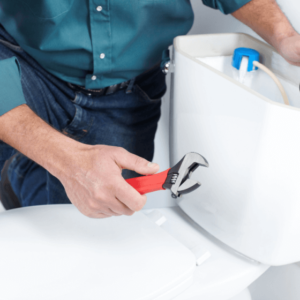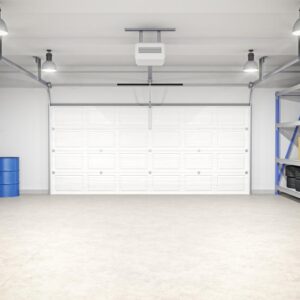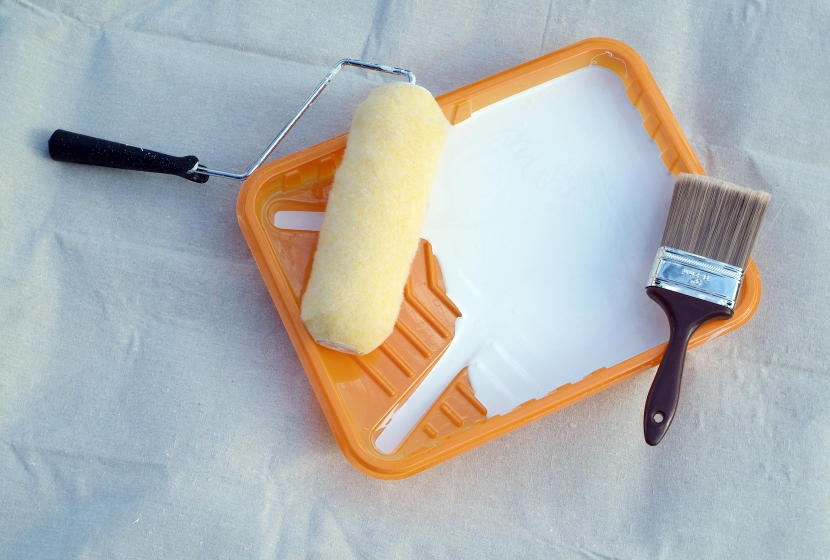No matter how many coats of paint you apply, finished walls rarely look perfect if the surface hasn’t been prepared with primer first. But how do you know which one is the right one for the job?
A Primer on Primers
A primer is a special type of paint that goes on before the finish coat of paint. Primers lay the foundation of your paint job and can be used on wood, metal, drywall and concrete. Whether you’re painting interior or exterior surfaces, primers ensure that the painting surface has an ideal, uniform texture (slightly coarse) so that paint adheres effectively. In addition, primers seal up porous surfaces and prevent stains and previous colors from showing up underneath your paint job. They also help even out walls after you’ve spot patched and made repairs.
While paint can be applied to already-painted surfaces without priming, it’s usually better to prime so that your work is as durable and long lasting as it can be. When working on painted surfaces, priming is necessary if you’re switching paint types. For example, going from oil-based paints to latex-based paints and vice versa, or changing colors drastically. Also, if paint is cracking, crumbling or if there is surface damage, priming can eliminate any problems with your paint job (after you’ve made repairs and prepared the surface).
Primers are formulated for interior surfaces, exterior surfaces, metals and in particular tints. Interior primer seals, increases adhesion and creates a uniform surface for walls, etc. Exterior primers minimize cracking and mildew growth, and protect masonry surfaces from alkalinity and efflorescence. Exterior primers come in specific formulas for use on wood, masonry or metal. Metal primers provide a tight bond between the surface and topcoat and inhibit corrosion. Tinted primers improve the end result of your painting project; they work with the finish coat color to boost color accents for a better-looking job.
Types of Primers
There are three basic types of primers: oil-based, latex and pigmented shellac primer. Each has its strengths and weaknesses and works best on certain surfaces and in particular circumstances.
Oil-based Primer
Oil-based primers and paints have been an industry standard for decades. These primers work with both oil paints and latex paints, making them very versatile and applicable to a wide variety of surfaces. Wood (painted or unpainted), steel and other metals, and surfaces with existing paint, such as interior and exterior walls are ideal surfaces for oil-based primers.
Many oil-based primers are good “stain killers” and prevent stains from showing through your new coats of paint. They are good for blocking stains on your walls from ink, nicotine and water.
Oil-based primers are ideal for interior and exterior unfinished or bare wood because they seal the porous surface of wood, enabling the coat of paint to better cover the surface. They stop tannins, released from woods, such as cedar or redwood, from bleeding through the surface of the paint. They also prevent or slow down paint peeling, cracking and blistering.
A drawback of oil-based primers (as with oil-based paints), they are often slow-drying and release high amounts of volatile organic compounds (VOCs), which can be harmful to people in high concentrations and with prolonged exposure. They also require that you use harsh thinners and solvents to clean brushes and applicators, and have to be disposed of carefully and properly. Oil-based primers should not be used on masonry.
Latex-based Primer
Latex primers are water-based and ideal for prepping unfinished drywall for painting. They are more flexible and fast drying, and are less brittle than oil-based primers, making them less susceptible to peeling and cracking. They are also good for priming soft wood (such as pine), brick and concrete and galvanized metals.
Latex primers are good for drywall because they even out the surface of the wallboard and any joint compound applied to it, and any areas that have been patched or repaired. They also can cover and seal in previous minor stains from smoke, lipstick, crayon, etc., but are not as effective at covering stains as oil- and shellac-based primers.
These primers are water-soluble and so are easy to clean. They also come in low- or no-VOC formulas, making them a healthier alternative to oil-based and shellac primers.
Shellac Primer
Shellac has been used for centuries to seal wood and other surfaces. Good for interior paint jobs, shellac-based primers are possibly the best stain-blocking primers, working well on severe water and smoke damage to walls and surfaces — they even seal in smells from smoke damage. They also are excellent at preventing normal water, rust and smoke stains, as well as wood tannins from bleeding through new paint. They work well on wood, metal, plaster, and even plastic, and are fast drying and highly adhesive. They also can be used with both oil-based and latex paints.
The drawback to using shellac-based primers is that they are not as versatile as latex or oil and they give off more fumes. They require that you use denatured alcohol to thin them and clean applicators.
How to Apply Primer
Applying primer is done pretty much the same way as paint. Knowing a few tricks and tips though will have you laying the perfect foundation for your paint projects.
Before starting any painting project, you need to thoroughly clean and repair the surface on which you’ll be painting. Wash the wall surface using a damp cloth, mild detergent and water. Patch any holes and wall damage with spackling compound. Scrape off flaky paint using a putty knife.
Helpful Tip
Use synthetic brushes, such as polyester or nylon, with latex primer. Natural bristle brushes work best if you’re using oil-based primers.
Priming doesn’t require as much care as painting, but you’ll use the same technique. For interior rooms, start with the ceiling, first covering the perimeter and unpainted areas around fixtures with a paintbrush. Use a roller applicator and move in 6′-square sections, use a series of overlapping “W” strokes from right to left, then back from left to right. Spread the primer evenly using horizontal strokes. Continue in 6′-square sections until the entire surface is primed.
Safety Alert!
Primers and paints can give off fumes that can be hazardous if exposed to them for extended durations. Be sure your workspace is well ventilated. Open windows and/or use fans to circulate the air or draw it outside.
Always prime if you’re painting a lighter color over a darker one. Eggshell and semi-gloss paints in particular require a coat of primer as they often absorb unevenly. On flat-painted walls with minor repairs, you may only need to spot prime. For walls with larger areas of patching plaster, use True Value EasyCare Ultra Premium Interior Primer/Sealer.
Helpful Tips
If you’re not sure whether existing paint is oil-based or latex, saturate a rag with alcohol or fingernail polish remover and wipe a small section of the area. If the paint is latex, you should have a bit of paint on the rag after you’ve wiped. If the paint is oil-based, it won’t be affected.
Don’t wait too long after priming to apply the finishing coat of paint. Check the instructions on the primer can to determine how quickly you should start painting once the primer has completely dried.
Now that you know a little bit about primers, it’s time to start painting!
Project Shopping List
Here’s what you’ll need to complete this project successfully.












